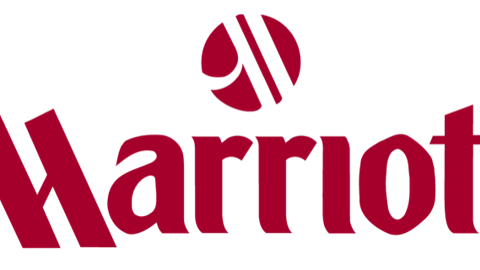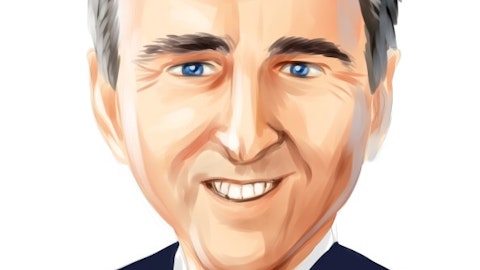You’ve probably had experiences at hotels that range from truly enjoyable to “never goin’ back to that dump again.” Today, we look at a hotel chain that excels at providing top-flight customer service as well as furthering the goals of its franchisees and stockholders. In other words, a hotel chain that gets it right.

When revpar is above par
A key hospitality industry metric is RevPAR, or revenue per available room. The metric is calculated by multiplying the occupancy rate of hotels by their ADR, which means average daily room rate. Ideally, a hotel chain would like to see increases in both occupancy and ADR, with a resulting increase in RevPAR. If occupancy rises but ADR falls, it can mean the chain tried to fill rooms by charging less for them.
In the second quarter, Marriott International Inc (NYSE:MAR) reported that for its North American hotels, comparable system RevPAR rose 5.2%, with a 3.9% increase in ADR. The gains were across the board: their full-service and luxury hotels scored a 5.9% increase in RevPAR, with ADR rising 4.1%. Its limited service brands — another term for less expensive rooms — including Courtyard and Residence Inn, showed a 4.7% increase in RevPAR and ADR that was 3.6% higher.
So, what does all this RevPAR stuff mean in terms of making money: Marriott International Inc (NYSE:MAR) reported that net income surged 25% compared to the same quarter last year, reaching $179 million. The company said both the business and leisure segments were strong.
For comparison purposes, let’s look at a major competitor of Marriott International Inc (NYSE:MAR)’s, InterContinental Hotels Group PLC (ADR) (NYSE:IHG), whose brands include Crowne Plaza and Holiday Inn. This company reported that in the first quarter, global RevPAR was up 3.1% over the previous year, with a 2% increase in ADR. U.S. RevPAR was particularly strong, up 4.6%. The company reported that its luxury/upscale brands achieved notably high revenue growth during the quarter.
The joy of giving back
To shareholders, that is. Through a combination of stock repurchases and dividend payments, Marriott International Inc (NYSE:MAR) has returned nearly $600 million to shareholders so far in 2013. This built upon the foundation set last year, when the company returned more than $1.3 billion. Shareholders love dividends of course, but stock repurchases mean the supply of stock is decreased. As earnings are spread over fewer shares — particularly when earnings are growing — this translates into higher EPS.
Who doesn’t love higher EPS? Committing to a repurchase program that massive also gives us a clue that management believes that the stock represents a good value for the price, so perhaps, we should as well. It gives us a further clue that the business is generating large amounts of cash.
Breadth of brands
Marriott owns 18 different hotel brands from the lofty and luxurious Ritz-Carlton to the humble and utilitarian Residence Inn. This diversification has two positives. First, it can take advantage of shifts in patterns in demand. During the recession, for example, leisure travelers downsize to more affordable lodging choices. Instead of losing cost-conscious customers to competitors, Marriott could book these travelers to its lower end brands.
Also, for a franchisor of hotels, having this diversity of brands makes it easier to attract potential hotel developers and franchisees. The franchisee can select the property that fits its financing and fits the market where the hotel will be located. Marriott franchisees have the flexibility to be in large cities, smaller towns, or suburban areas.
Not all successful chains pursue this brand diversification strategy, opting instead to focus on one market segment and strive to be a market leader. Wynn Resorts, Limited (NASDAQ:WYNN) operates destination casino resorts in Las Vegas and, of all places, China. The package of services it provides customers include luxurious accommodations, a variety of entertainment options including its own golf course, and the opportunity to play games of chance not involving the stock market.
For its Vegas operations, Wynn Resorts, Limited (NASDAQ:WYNN)’s second-quarter results sparkled like the sequins on a showgirl’s costume. Net revenue was up 16.2% compared to the same 2012 quarter, with net casino revenue soaring nearly 45%. RevPAR was up 4.7%. Wynn’s performance is another indicator that the American leisure traveler is willing to get out there and spend more.
Connecting with customers
Hotel chains’ marketing models are changing from being dependent on national advertising to instead connecting with potential guests through social media. Marriott excels in this area, earning in 2012 a place in Fortune magazine’s “Social Media Star” list. This focus on social media doesn’t just save money on advertising, it allows the company to build its base of younger customers, the Gen X and Gen Y set — which the company states is an important part of its strategy.
Not the time to stand still
One reason hotel chains have been able to achieve RevPAR gains in the last two years is that demand for hotel rooms is exceeding supply because development slowed during the financial crisis of 2008 and the recession that followed. Marriott saw better days ahead, and now has 140,000 rooms in the process of being added to their system. These are hotels under construction, awaiting conversion from another brand or approved for development. Their expansion plans as published in their annual report, are particularly aggressive in Asia, where they currently have 137 hotels but 140 new ones in development.
What we learned
A report from Ernst & Young says that the hospitality industry should benefit from “imminent and sustainable recovery going forward.” With this economic backdrop, Marriott should continue to show gains in profits. There was a recent news report that Marriott now estimates full year EPS slightly lower than its previous guidance due to sluggish growth in bookings from business groups and in its Europe and Asia properties.
But, I wouldn’t let a few pennies per share distract us from all the good things this company is doing, including being on the cutting edge of social media marketing in its industry and the use of mobile technology.
This is a company that offers investors the chance to participate in the continued rebound in the lodging industry. Instead of looking for the cheapest room or even taking “staycations,” industry experts report that travelers will look for higher quality experiences and be willing to pay for it. Marriott’s upper end hotels will definitely benefit from guests’ willingness to spend more, and all of its properties should benefit from increased travel in general.
Brian Hill has no position in any stocks mentioned. The Motley Fool has no position in any of the stocks mentioned.
The article Checking In With One of the World’s Top Hotel Chains originally appeared on Fool.com and is written by Brian Hill.
Brian is a member of The Motley Fool Blog Network — entries represent the personal opinion of the blogger and are not formally edited.
Copyright © 1995 – 2013 The Motley Fool, LLC. All rights reserved. The Motley Fool has a disclosure policy.




